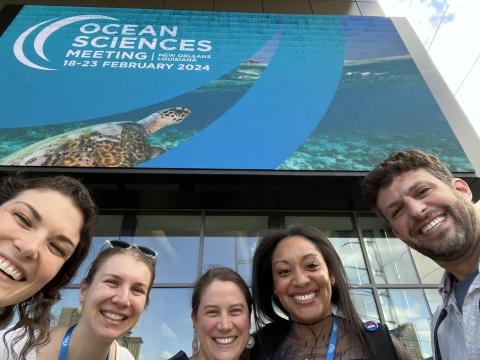Current Research
Behavioral and Physiological Response to Marine Energy
Many marine wildlife species—including mammals, fish, and invertebrates—use sound or acoustic signals in the ocean for a variety of life functions, such as communication, foraging, navigation, and reproduction. Underwater sound is characterized by two components: acoustic particle motion and pressure waves. To date, animal exposure research to anthropogenic sounds has mainly focused on sound pressure, as this is the component of sound marine mammals use and perceive. Meanwhile, there is increasing awareness that nearly all fishes and many invertebrates are sensitive to acoustic particle motion. Triton’s Acoustic Particle Motion Project focuses on the behavioral and physiological response of fishes and invertebrates to particle motion and substrate vibration emissions from marine energy converters. Through this work, Triton is working to advance our understanding of stressor-receptor responses across several taxa to improve knowledge around the potential environmental effects of marine energy devices.
Learn more about the project: Acoustic Particle Motion Project

Animal Interactions Research
The demonstration and validation of new technologies from controlled laboratory testing to deployment around marine energy devices is critical for advancing their use and application to address priority knowledge gaps. Through Triton’s Animal Interactions Research, we address technology needs and research gaps to inform animal interactions around marine energy devices. This research is comprised of four different approaches:
- Performing controlled laboratory tank and field experiments to assess the capabilities of imaging sonars to observe near-field interactions (e.g., collision and near-miss events) of fish with current energy converters.
- Testing capabilities of turbine blade-integrated sensors for collision detection.
- Developing a model to advance understanding of encounter rates of animals with marine energy devices.
- Fostering the use of AI in marine monitoring by developing high quality, publicly available annotated datasets from monitoring data, promoting best practices and standards relevant to ocean data, and demonstrating practical use cases (and limitations) of AI.
Through these projects, Triton will advance confidence in the methodologies and techniques for monitoring and researching animal interactions and collision risk around operational marine energy devices.
Triton's Animal Interactions Research Projects include:
- Imaging Sonar Capabilities (ISC)
- Blade Integrated Collision Detection (BICD)
- Probability of Encounter Model (PoEM)
- Data Annotation for Marine Monitoring (DAMM)

Science Communication and Outreach Research for Environmental Monitoring
Limited access to consistent and reliable environmental monitoring results and data presents a significant barrier to marine energy permitting and development. To reduce these barriers, Triton’s science communication and outreach research facilitates the effective translation and transfer of data and information around environmental effects from researcher to end user. Triton leverages communication and outreach to inform and engage industry stakeholders, regulators, researchers, and the public around environmental monitoring for marine energy and conducts research to improve information access to a variety of audiences.
Triton's science communication projects include:
